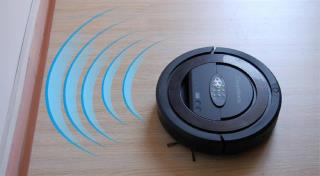How to Install Anchor CMS on a Debian 9 LAMP VPS
Using a Different System? Anchor CMS is a super-simple and extremely lightweight, free and open source Content Management System (CMS) Blog Engine tha
BlogoText CMS is a simple and lightweight, free and open source Content Management System (CMS) and minimalist blog engine. BlogoText CMS features built in RSS feeds, links sharing, drag and drop image and file upload, JSON/ZIP/HTML import and export, as well as Wordpress import. BlogoText is ideal for bloggers and developers who like to take a more minimalist approach to blogging.
In this tutorial we are going to install BlogoText CMS on a Fedora 26 LAMP VPS using Apache web server, PHP 7.1, and a MariaDB database.
We will start by adding a new sudo user.
First, log into your server as root:
ssh root@YOUR_VULTR_IP_ADDRESS
Add a new user called user1 (or your preferred username):
useradd user1
Next, set the password for the user1 user:
passwd user1
When prompted, enter a secure and memorable password.
Now check the /etc/sudoers file to make sure that the sudoers group is enabled:
visudo
Look for a section like this:
%wheel ALL=(ALL) ALL
Make sure it is uncommented. This line tells us that users who are members of the wheel group can use the sudo command to gain root privileges.
Once you have edited the file, you can save and exit by pressing Esc and then entering :wq to "write" and "quit" the file.
Next we need to add user1 to the wheel group:
usermod -aG wheel user1
We can verify the user1 group membership and check that the usermod command worked with the groups command:
groups user1
Now use the su command to switch to the new sudo user user1 account:
su - user1
The command prompt will update to indicate that you are now logged into the user1 account. You can verify this with the whoami command:
whoami
Now restart the sshd service so that you can login via ssh with the new non-root sudo user account you have just created:
sudo systemctl restart sshd
Exit the user1 account:
exit
Exit the root account (which will disconnect your ssh session):
exit
You can now ssh into the server instance from your local host using the new non-root sudo user user1 account:
ssh user1@YOUR_VULTR_IP_ADDRESS
If you want to execute sudo without having to type a password every time, then open the /etc/sudoers file again, using visudo:
sudo visudo
Edit the section for the wheel group so that it looks like this:
%wheel ALL=(ALL) NOPASSWD: ALL
Please note: Disabling the password requirement for the sudo user is not a recommended practice, but it is included here as it can make server configuration much more convenient and less frustrating, especially during longer systems administration sessions. If you are concerned about the security implications, you can always revert the configuration change to the original after you finish your administration tasks.
Whenever you want to log into the root user account from within the sudo user account, you can use one of the following commands:
sudo -i
sudo su -
You can exit the root account and return back to your sudo user account any time by simply typing the following:
exit
Before installing any packages on the Fedora server instance, we will first update the system.
Make sure you are logged in to the server using a non-root sudo user and run the following command:
sudo dnf -y update
Install the Apache web server:
sudo dnf -y install httpd
Then use the systemctl command to start and enable Apache to execute automatically at boot time:
sudo systemctl enable httpd
sudo systemctl start httpd
Check your Apache configuration file to ensure that the DocumentRoot directive points to the correct directory:
sudo vi /etc/httpd/conf/httpd.conf
The DocumentRoot configuration option will look like this:
DocumentRoot "/var/www/html"
Now, let's make sure that the mod_rewrite Apache module is loaded. We can do this by searching the Apache base modules configuration file for the term "mod_rewrite".
Open the file:
sudo vi /etc/httpd/conf.modules.d/00-base.conf
Search for the term mod_rewrite.
If the mod_rewrite Apache module is loaded, you will find a configuration line looking like this:
LoadModule rewrite_module modules/mod_rewrite.so
If the above line starts with a semi-colon, you will need to remove the semi-colon to uncomment the line and load the module. This, of course, applies to any other required Apache modules too.
We now need to edit Apache's default configuration file so that mod_rewrite will work correctly with BlogoText CMS.
Open the file:
sudo vi /etc/httpd/conf/httpd.conf
Then find the section that starts with <Directory "/var/www/html"> and change AllowOverride none to AllowOverride All. The end result (with all comments removed) will look something like this:
<Directory "/var/www/html">
Options Indexes FollowSymLinks
AllowOverride All
Require all granted
</Directory>
Now save and close the Apache configuration file.
We will restart Apache at the end of this tutorial, but restarting Apache regularly during installation and configuration is certainly a good habit, so let's do it now:
sudo systemctl restart httpd
We now need to open the default HTTP and HTTPS ports as they will be blocked by firewalld by default.
Open the firewall ports:
sudo firewall-cmd --permanent --add-port=80/tcp
sudo firewall-cmd --permanent --add-port=443/tcp
Reload the firewall to apply the changes:
sudo firewall-cmd --reload
You will see the word success displayed in your terminal after each successful firewall configuration command.
We can quickly verify that the Apache HTTP port is open by visiting the IP address or domain of the server instance in a browser:
http://YOUR_VULTR_IP_ADDRESS/
You will see the default Apache web page in your browser.
SELinux stands for "Security Enhanced Linux". It is a security enhancement to Linux which allows users and administrators more control over access control. It is enabled by default in Fedora 26, but it is definitely not essential for server security as many Linux server distributions do not ship with it installed or enabled by default.
To avoid file permission problems with BlogoText CMS later down the line, we are going to disable SELinux, for now. So open the SELinux configuration file with your favourite terminal editor:
sudo vi /etc/selinux/config
Change SELINUX=enforcing to SELINUX=disabled and then save the file.
To apply the configuration change, SELinux requires a server reboot, so you can either restart the server using the Vultr control panel or you can simply use the shutdown command:
sudo shutdown -r now
When the server reboots, your SSH session will get disconnected and you may see a message informing you about a 'broken pipe' or 'Connection closed by remote host'. This is nothing to worry about, simply wait for 20 seconds or so and then SSH back in again (with your own username and domain):
ssh user1@YOUR_DOMAIN
Or (with your own username and IP address):
ssh user1@YOUR_VULTR_IP_ADDRESS
Once you have logged back in, you should check the status of SELinux again with the sestatus command to make sure it is properly disabled:
sudo sestatus
You should see a message saying SELinux status: disabled. If you see a message saying SELinux status: enabled (or something similar) you will need to repeat the above steps and ensure that you properly restart your server.
We can now install PHP 7.1 along with all of the necessary PHP modules required by BlogoText CMS:
sudo dnf -y install php php-mysqlnd php-mbstring php-gd php-common php-pdo php-pecl-imagick php-xml php-zip
Fedora 26 defaults to using MariaDB database server, which is an enhanced, fully open source, community developed, drop-in replacement for MySQL server.
Install MariaDB database server:
sudo dnf -y install mariadb-server
Start and enable MariaDB server to execute automatically at boot time:
sudo systemctl enable mariadb
sudo systemctl start mariadb
Secure your MariaDB server installation:
sudo mysql_secure_installation
The root password will be blank, so simply hit enter when prompted for the root password.
When prompted to create a MariaDB/MySQL root user, select "Y" (for yes) and then enter a secure root password. Simply answer "Y" to all of the other yes/no questions as the default suggestions are the most secure options.
Log into the MariaDB shell as the MariaDB root user by running the following command:
sudo mysql -u root -p
To access the MariaDB command prompt, simply enter the MariaDB root password when prompted.
Run the following queries to create a MariaDB database and database user for BlogoText CMS:
CREATE DATABASE blogo_db CHARACTER SET utf8 COLLATE utf8_general_ci;
CREATE USER 'blogo_user'@'localhost' IDENTIFIED BY 'UltraSecurePassword';
GRANT ALL PRIVILEGES ON blogo_db.* TO 'blogo_user'@'localhost';
FLUSH PRIVILEGES;
EXIT;
You can replace the database name blogo_db and username blogo_user with something more to your liking, if you prefer. Also, make sure that you replace "UltraSecurePassword" with an actually secure password.
Change your current working directory to the default web directory:
cd /var/www/html/
If you get an error message saying something like 'No such file or directory' then try the following command:
cd /var/www/ ; sudo mkdir html ; cd html
Your current working directory will now be: /var/www/html/. You can check this with the pwd (print working directory) command:
pwd
Now use wget to download the BlogoText CMS installation package:
sudo wget https://github.com/BlogoText/blogotext/archive/3.7.6.zip
Please note: You should definitely check for the most recent version by visiting the BlogoText CMS download page.
List the current directory to check that you have successfully downloaded the file:
ls -la
Let's quickly install unzip so we can unzip the file:
sudo dnf -y install unzip
Now uncompress the zip archive:
sudo unzip 3.7.6.zip
Move all of the installation files to the web root directory:
sudo mv blogotext-3.7.6/* /var/www/html
Change ownership of the web files to avoid any permissions problems:
sudo chown -R apache:apache * ./
Restart Apache again:
sudo systemctl restart httpd
Now we're ready to move on to the final step.
It's time to visit the IP address of your server instance in your browser, or if you've already configured your Vultr DNS settings (and given it enough time to propagate) you can simply visit your domain instead.
To access the BlogoText CMS installation page, enter your Vultr instance IP address into your browser address bar, followed by /admin/install.php:
http://YOUR_VULTR_IP_ADDRESS/admin/install.php
Most of the installation options are self explanatory, but here are a few pointers to help you along:
Select your language and click on the OK button.
Enter the following Administrator and Site details:
Username: admin
Password: <admin password>
Blog’s URL: <your URL>
Click OK to continue.
Select MySQL as the DBMS and then enter the following database values:
MySQL User: blogo_user
MySQL Password: UltraSecurePassword
MySQL Database: blogo_db
MySQL Host: localhost
Click OK to continue.
You will be automatically redirected to the admin section so simply enter your username and password and click on the Connection button to log in. You can also enter the admin address manually by entering the following URL:
http://YOUR_VULTR_IP_ADDRESS/admin
For added security, you can change the name of your /admin/ folder:
sudo mv -i ./admin ./top_secret_name
You are now ready to start adding your content and configuring the look and feel of your site. Make sure you check out the BlogoText CMS wiki page for more information about how to build and configure your site.
Using a Different System? Anchor CMS is a super-simple and extremely lightweight, free and open source Content Management System (CMS) Blog Engine tha
Using a Different System? Anchor CMS is a super-simple and extremely lightweight, free and open source Content Management System (CMS) Blog Engine tha
Using a Different System? BlogoText CMS is a simple and lightweight, free and open source Content Management System (CMS) and minimalist blog engine
Using a Different System? Anchor CMS is a super-simple and extremely lightweight, free and open source Content Management System (CMS) Blog Engine tha
Dirbtinis intelektas nėra ateityje, jis čia, dabartyje Šiame tinklaraštyje Skaitykite, kaip dirbtinio intelekto programos paveikė įvairius sektorius.
Ar taip pat esate DDOS atakų auka ir esate sumišęs dėl prevencijos metodų? Perskaitykite šį straipsnį, kad išspręstumėte savo užklausas.
Galbūt girdėjote, kad įsilaužėliai uždirba daug pinigų, bet ar kada susimąstėte, kaip jie uždirba tokius pinigus? padiskutuokime.
Ar norite pamatyti revoliucinius „Google“ išradimus ir kaip šie išradimai pakeitė kiekvieno žmogaus gyvenimą šiandien? Tada skaitykite tinklaraštį, kad pamatytumėte „Google“ išradimus.
Savavaledžių automobilių koncepcija, kuri išvažiuotų į kelius su dirbtinio intelekto pagalba, yra svajonė, kurią jau kurį laiką svajojame. Tačiau nepaisant kelių pažadų, jų niekur nematyti. Skaitykite šį tinklaraštį, kad sužinotumėte daugiau…
Kadangi mokslas sparčiai vystosi, perimdamas daug mūsų pastangų, taip pat didėja rizika, kad pateksime į nepaaiškinamą singuliarumą. Skaitykite, ką mums gali reikšti išskirtinumas.
Duomenų saugojimo metodai gali būti tobulinami nuo pat Duomenų gimimo. Šiame tinklaraštyje, remiantis infografika, aprašoma duomenų saugojimo raida.
Skaitykite tinklaraštį, kad paprasčiausiai sužinotumėte apie skirtingus didžiųjų duomenų architektūros sluoksnius ir jų funkcijas.
Šiame skaitmeniniu būdu pagrįstame pasaulyje išmanieji namų įrenginiai tapo svarbia gyvenimo dalimi. Štai keletas nuostabių išmaniųjų namų įrenginių privalumų, kaip jie daro mūsų gyvenimą vertą gyventi ir paprastesnį.
Neseniai „Apple“ išleido „macOS Catalina 10.15.4“ priedą, skirtą problemoms išspręsti, tačiau atrodo, kad dėl atnaujinimo kyla daugiau problemų, dėl kurių „Mac“ įrenginiai blokuojami. Norėdami sužinoti daugiau, perskaitykite šį straipsnį



